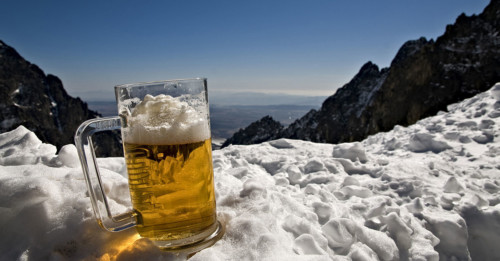Sayings like “don’t mess with a good thing,” and “if it ain’t broke, don’t fix it” exist for a reason—humans kind of like to mess with good things, and fix unbroken ones.
The world of beer is no exception. Over the past several decades, craft beer has planted its roots deep into the beer world. And the tree bears a bunch of fruit—modern beer consumers can count on being able to purchase an array of reliably good beer styles on a regular basis. It’s a good thing, not to be messed with, right? Sort of. Craft beer has created such a healthy array of consistent beer styles that brewers are specifically able to mess with it, using their knowledge and expertise in traditional brewing methods to push the envelope a little (or a lot). The result is a category called simply “extreme.”
Because beer relies on the specific interactions of hops, malt, water, and yeast, there’ll always be a similar backbone to the structure of any beer—extreme or otherwise. But that still leaves plenty of room to play around. So what exactly makes a beer “extreme”? Basically any beer where elements of the brewing process have been taken to an exaggerated, hyperbolic level; even to the point of creating an imbalance in flavor profile.
Extreme beer isn’t a new thing, either. Intrepid homebrewers—the guys who basically started the craft beer revolution—have been toying with crazy beer styles for decades now, though Sam Adams founder Jim Koch is often credited with brewing one of the first “extreme” beers, their 1994 Triple Bock which, at an unprecedented 17.5% ABV, was then the strongest beer in the world (made by partially freezing the beer in the fermenting process and harvesting some of the water, which freezes first.)
A lot has changed since 1994, including the highest ABV out there. As of 2015, it’s a beer called Snake Venom, a barleywine style made by the Scottish brewery Brewmeister that clocks in at an astronomical 67.5% ABV (that’s higher than cask strength whiskey—and the beer is intended to be treated as such). At that amount of alcohol, most of the flavors you’d associate with a beer take a backseat to raw power. But extreme beers often sacrifice balance for glory. (There’s an inherent, and friendly, competitiveness in the world of extreme beer). Take hops. American IPAs, especially West Coast IPAs, may have popularized hop-forward beers, but something like Flying Monkey’s Alpha Fornication (which clocks in at 2500 IBUs, where 100 IBUs already pushes the boundaries of reasonable bitterness) seems more like a (fun) science project than a beer.
Flavors can get just as extreme. In the already varied world of beer styles, brewers are playing with things like bacon, pizza, curry, even Rocky Mountain oysters into their beers. Yeast is even fair game. There have been beers brewed with 45 million year-old yeast, and beer brewed with yeast harvested from the brewer’s beard (yes). While weird flavors and yeasts have their place (apparently that beard yeast beer is pretty good), from a drinker’s perspective, the most important development is brewers building (less extreme) complexity into their beers—regularly barrel-ageing, tweaking flavor profiles, looking backward and forward for inspiration. Which is how you end up with beers like Great Divide’s “21st Anniversary,” an American wild ale aged in red wine barrels, Dogfish Head’s Chateau Jiahu, a beer inspired by a Neolithic Chinese fermented beverage, or Founders “Kentucky Breakfast Stout,” brewed with coffee and secretly cave-aged for a year in Kentucky bourbon barrels. Extreme lengths, yes, but sublimely drinkable results.
